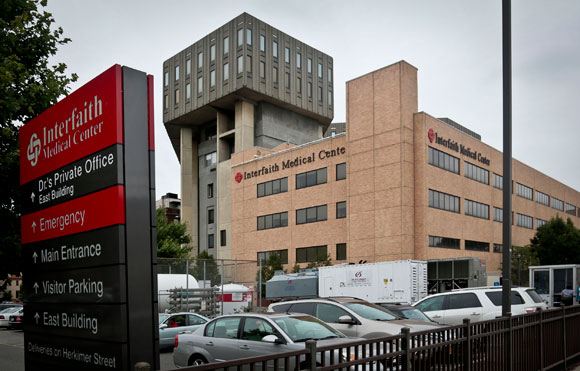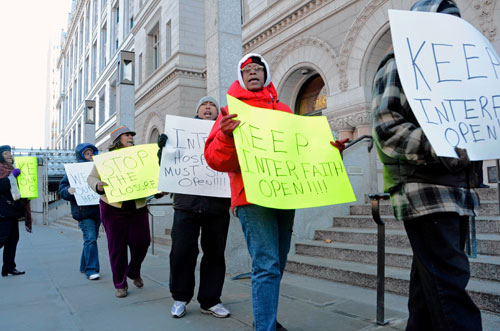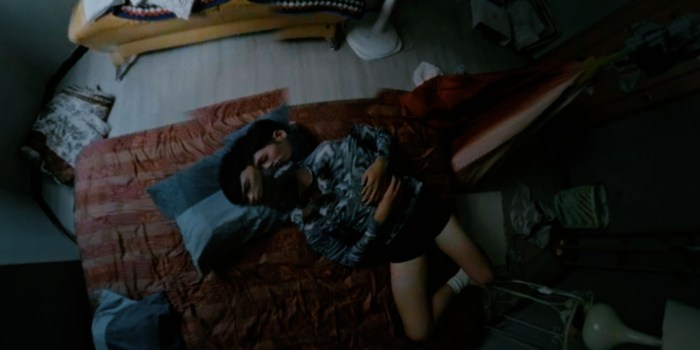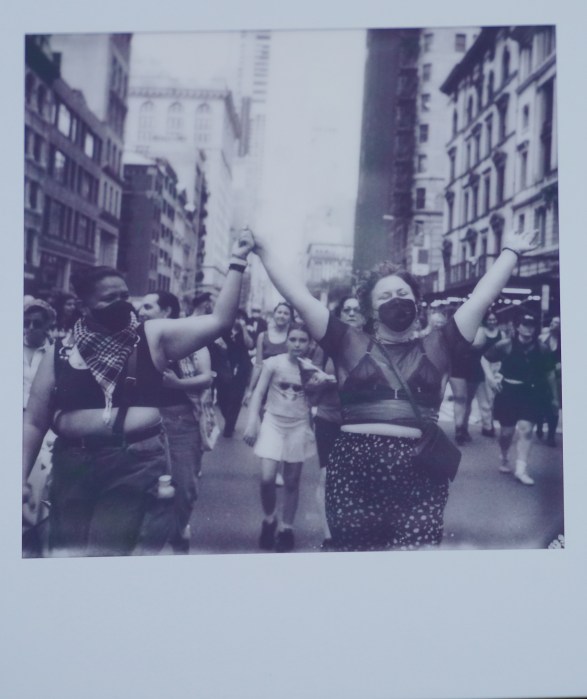Resident physicians and fellows gathered outside Brookdale University Hospital Medical Center on Tuesday evening for a candlelit vigil commemorating two years since the start of the coronavirus pandemic in New York City, honoring the lives lost to the disease, the trauma healthcare workers have endured, and calling out the ongoing disparities people of color face in accessing healthcare in the city.
Headed by the Committee of Interns and Residents, the largest union representing residents and fellows — essentially doctors-in-training — in hospitals across the country, the vigil gathered doctors from One Brooklyn Health, a system of hospitals and medical facilities including Brookdale, the Kingsbrook Jewish Medical Center, and the Interfaith Medical Center.
“We love and care so very much for our communities, and because we do, we have fought tirelessly and remained steadfast in our commitment to serve our communities,” said Ernest Rin, chief resident physician of emergency medicine at Brookdale. “And in doing so, my fellow interns and residents have sacrificed significant time, time to reflect upon our experiences.”
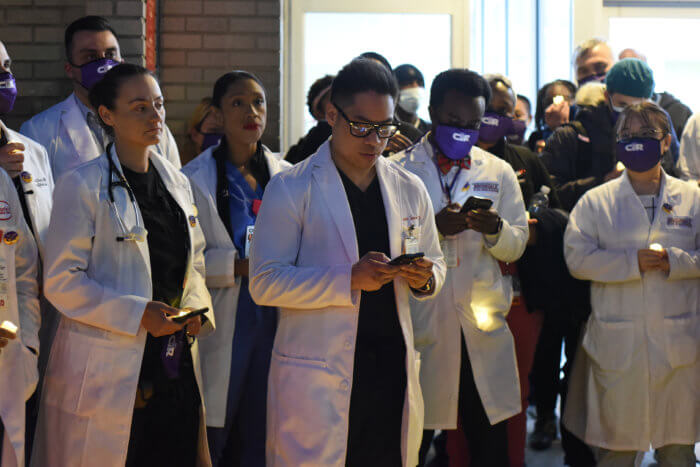
Communities of color, including the ones One Brooklyn serves, were hit particularly hard by the pandemic. According to The Atlantic’s now-defunct COVID Tracking Project, Black and Hispanic New Yorkers were significantly more likely to be hospitalized with a serious case of COVID and to die from the disease.
Early data collected in a state-commissioned survey by the University of Albany found that Black and Hispanic workers made up a significant portion of essential workers and were less likely than white New York City residents to be able to work from home, increasing their risk of exposure to the virus. The study, released in July 2020, also notes that social determinants like discrimination, systemic racism, and more had not yet been accounted for, but contributed to those higher rates.
“As a kid I was a patient here right at Brookdale Pediatrics in the East Flatbush clinic, so I know what the One Brooklyn hospital system means to the community, it means the world to them,” said Colleen Achong, an internal medicine resident at Brookdale. “They are literally the lifeline for people suffering from some of the worst health disparities and they should be a place of refuge, of healing, and of hope. During the pandemic, healthcare workers tried desperately to place our lives and ourselves as shields between the community and COVID. We worked tirelessly, 24 hours, 24/7, until we fell asleep standing up.”
While she was still a medical student, Achong took on a role as a mortuary manager at the Interfaith Medical Center as the hospital grappled with the enormous spike in fatalities in the worst of the pandemic.
“We saw so much loss, so many people were lost to COVID,” she said. “My colleagues and I did everything we could do to make sure their bodies were respected and their families were treated with the dignity they deserve.”
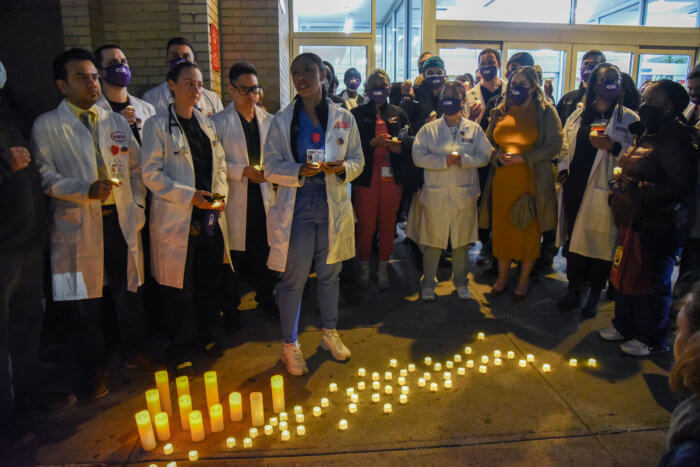
According to city data, the neighborhood surrounding Interfaith has a case rate per 100,000 more than double that of Brooklyn and of New York City — one in three people there has been diagnosed with COVID so far, with a much higher death rate than either the borough or the city as a whole.
Hospitals in the most-affected neighborhoods have been underfunded “for years,” Achong added. The lack of adequate resources and poorer health outcomes were not created by the pandemic, just made worse.
“Because we are given less with everything, COVID ripped through the seams of our community,” she said.
Citywide, about 407 of every 100,000 people died from COVID. In Brooklyn, that number is 417 out of 100,000. In Brownsville, where Brookdale stands, the death rate skyrockets, to 720 deaths per 100,000 people.
As mask and vaccine mandates in the city are rolled back, resources at One Brooklyn hospitals are still strained. As of March 23, only four of Brookdale’s 39 intensive care unit beds were available, with just 20 of the hospital’s total 239 hospital beds available. At Interfaith, twelve out of thirteen ICU beds were filled.
According to the most recently available data aggregated by The New York Times, Brookdale was treating 11 COVID patients and Interfaith three. Across the city, cases are increasing, and while data currently shows hospitalizations and death on a downswing, those numbers are often inaccurate, as there is a delay in hospitals reporting those numbers.
Oftentimes, residents were the last person to see a patient before they died, said Salome Wiredu, a pediatric resident at Brookdale. They came in on their days off to check in on patients and held up phones so they could FaceTime with residents unable to visit.
“To those of you who lost loved ones, we want you to know that they are not forgotten,” Wiredu said. “And we want you to know that we will never forget them. We remember every face, every name and every moment.”










